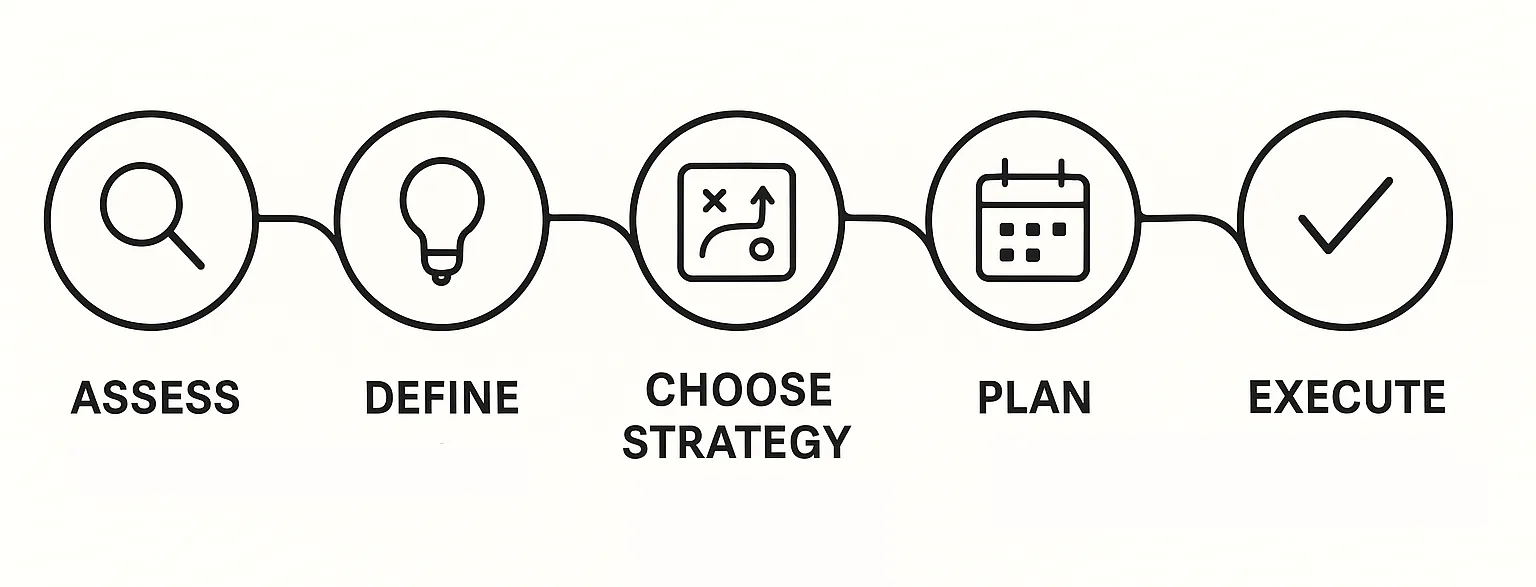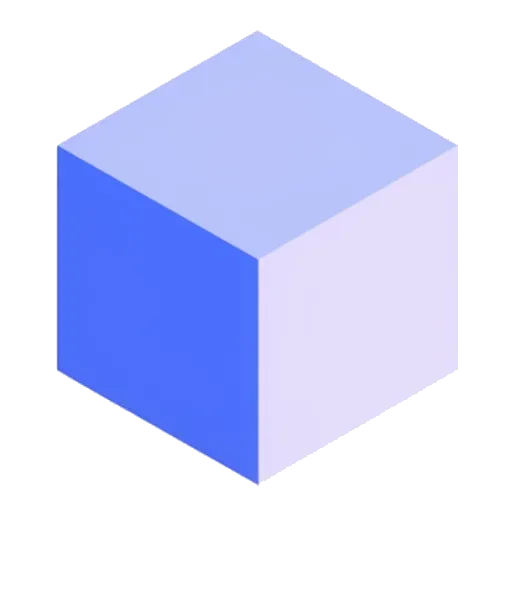TL;DR: Modernizing legacy systems isn’t just a technical upgrade; it’s a strategic business move. This guide breaks down why it’s crucial, what your options are (from a simple “lift and shift” to a full rewrite), and how to create a roadmap for success. We’ll cover strategies, costs, benefits, and the human side of transformation.
Look, we’ve all been there. There’s that one system in the company… you know the one. It’s critical, it’s ancient, and nobody really knows how it works anymore. It’s the elephant in the server room. For years, the mantra was “if it ain’t broke, don’t fix it.” But in today’s digital economy, that thinking isn’t just outdated; it’s dangerous. Sticking with legacy technology is no longer a neutral choice; it’s an active decision to fall behind.
This guide is for you, the tech leader or business manager who knows something has to change. It’s not just another high-level overview. We’re going deep. We will dissect the strategies, lay out a step-by-step action plan, and even tackle the often-ignored human element that can make or break a project. By the end, you’ll have a clear, actionable framework for turning your technical debt into a competitive advantage.
🤔 What Is a Legacy System, Really?
First things first, let’s clear up a misconception. “Legacy” doesn’t just mean old. A 20-year-old COBOL system that does its job perfectly might not be a priority. A three-year-old application built with a now-defunct JavaScript framework, however, could be a ticking time bomb.
A system becomes “legacy” when it actively hinders your business. It’s less about age and more about its negative impact.
Telltale signs your system is a liability:
- Sky-high Maintenance Costs: A huge chunk of your IT budget is spent just keeping the lights on.
- Lack of Skilled Support: Finding developers who know the technology is like searching for a needle in a haystack, and they cost a fortune.
- Security Vulnerabilities: The system can’t support modern security protocols, making it an easy target for cyberattacks.
- Integration Nightmares: It’s difficult or impossible to connect the system to modern tools and platforms via APIs.
- Poor Performance: It’s slow, crashes frequently, and frustrates both employees and customers.
- Blocks Innovation: You can’t implement new features or adapt to market changes because the system is too rigid.
- Hidden Business Logic: Critical business rules are buried deep inside the code, undocumented and understood by only a few veterans (if any).
For a deeper dive into the definition and risks, check out our detailed article: What Is a Legacy System?
💡 Why Modernization Is No Longer Optional
Procrastinating on modernization isn’t saving money; it’s accumulating technical debt with compound interest. Every day you wait, the gap widens between what your technology can do and what your business needs to do to survive and thrive. This isn’t just a tech problem; it’s a board-level business risk.
The conversation has shifted. The strategic dilemma is no longer about whether to keep an old system running but about how to move forward intelligently. You can explore this choice in our guide: Legacy System Maintenance vs. Modernization.
The core reasons to act are compelling:
- The Crippling Cost of Doing Nothing: The operational cost of legacy systems, including emergency patches and specialized talent, often dwarfs the planned cost of modernization over time.
- The Agility Gap: Modern businesses compete on speed. Legacy systems are anchors, slowing down product launches, feature updates, and your ability to react to competitors.
- The Security Imperative: Running on outdated software is like leaving your front door unlocked. A 2023 report showed the average cost of a data breach reached an all-time high of $4.45 million. Can you afford that?
- The Talent Drain: Top engineering talent wants to work with modern tools and architectures. Forcing them to maintain archaic systems is a recipe for high turnover and a disengaged workforce.
🗺️ The 7 Core Strategies for Legacy System Modernization
Once you’ve decided to modernize, the next question is how. You don’t have to go “all-in” with a complete rewrite from day one. The industry, led by firms like Gartner and AWS, has defined a spectrum of strategies, often called the “7 Rs.”
Let’s break them down in detail, moving from the simplest to the most transformative.
The “7 Rs” at a Glance
| Strategy | Description | Key Advantage | Key Disadvantage | Best For… |
|---|---|---|---|---|
| Retire | Decommission the application entirely. | Eliminates all costs and risks. | Functionality is lost. | Applications that are no longer used or are redundant. |
| Retain | Keep the system as-is. | Zero upfront cost or effort. | The problems don’t go away. | Non-critical systems with low business value and low risk. |
| Rehost | Move the app to a different infrastructure (IaaS cloud) without code changes. “Lift and Shift.” | Fast, low-cost, and low-risk. | Doesn’t fix underlying architectural problems. | Getting to the cloud quickly to exit a data center. |
| Replatform | Make minor modifications to leverage cloud capabilities (e.g., managed database). “Lift and Reshape.” | Achieves some cloud benefits with minimal changes. | Can be a slippery slope to a larger project. | Apps that can get a significant boost from minor platform tweaks. |
| Refactor | Restructure existing code to improve its design without changing its external behavior. | Improves non-functional attributes like performance. | Doesn’t add new features. | Healthy, valuable applications that need a technical cleanup. |
| Re-architect | Materially alter the app’s architecture for a more scalable model, like microservices. | Unlocks major agility and scalability. | High complexity and cost. | Monolithic apps that are critical and need to evolve quickly. |
| Rebuild/Replace | Rewrite the app from scratch or replace it with a COTS/SaaS solution. | Complete modernization with no legacy constraints. | Highest cost, risk, and time commitment. | Apps where the existing code is unsalvageable. |
Deeper Dive into Key Approaches
H4: Rehosting (“Lift and Shift”)
- The Analogy: You’re moving your house from one plot of land to another. The house itself doesn’t change, just its location.
- In Detail: This is the most straightforward cloud migration strategy. You take your application server and its data and simply run it on a virtual machine (like an EC2 instance on AWS) in the cloud. It’s fast and requires minimal changes.
- Best Use Case: You have a deadline to close a data center, or you want to take a first, quick step into the cloud to start realizing some infrastructure benefits (like reliability and scalability on demand).
- The Pitfall: You carry all your technical debt with you to the cloud. You’re now paying a cloud provider to run an inefficient, monolithic application. It doesn’t solve any of the core software problems.
H4: Replatforming (“Lift and Reshape”)
- The Analogy: You’ve moved your house, and now you’re upgrading the plumbing and electrical systems to be more efficient.
- In Detail: This is a step up from rehosting. You still don’t change the core architecture of the app, but you swap out some of its components for cloud-native services. For example, you might migrate your self-hosted Oracle database to a managed service like Amazon RDS or Azure SQL Database.
- Best Use Case: Your application can gain significant performance or operational benefits by using managed cloud services, but you don’t have the time or budget for a full re-architecture.
- The Pitfall: Scope creep. It’s easy for these “minor modifications” to balloon into a much larger refactoring project if not carefully managed.
H4: Refactoring
- The Analogy: You’re not moving the house, but you’re doing a major internal renovation. You’re rewiring, improving the layout, and making it more energy-efficient, but from the outside, it looks the same.
- In Detail: This involves changing the internal structure of the code to improve its readability, maintainability, and performance without altering its external functionality. It’s about cleaning up technical debt within the existing application.
- Best Use Case: The application is strategically important and its core architecture is generally sound, but years of quick fixes have made it messy and hard to work with.
- The Pitfall: It can be a black hole for time and money with no immediately visible business benefits. It’s crucial to tie refactoring efforts to tangible outcomes like “reduce bug rate by X%” or “speed up feature deployment by Y%.”
H4: Re-architecting
- The Analogy: You’re tearing down the internal walls of your house to create a modern, open-plan living space. You’re fundamentally changing its structure to better suit your needs.
- In Detail: This is a major undertaking. You are fundamentally changing how the application is built. The most common driver today is to break down a large, monolithic application into a set of smaller, independent microservices. This allows teams to work on different parts of the application independently, leading to much greater agility.
- Best Use Case: A critical, monolithic system is preventing the business from innovating. You need to be able to update parts of the system frequently and independently.
- The Pitfall: This is complex, expensive, and requires a high level of technical expertise in areas like DevOps, containerization, and API design. Doing it wrong can create a distributed monolith, which is worse than what you started with.
H4: Rebuilding or Replacing
- The Analogy: Your old house is beyond repair. You demolish it and build a brand new, modern house on the same land. Or, you just buy a new house that’s already built (SaaS).
- In Detail: This is the most drastic option. Rebuilding means writing the application from the ground up with modern technology. Replacing means abandoning your custom application in favor of a commercial off-the-shelf (COTS) or Software-as-a-Service (SaaS) product.
- Best Use Case: The existing application is so broken, its technology so obsolete, or its business purpose so generic that starting over is a better option than trying to fix it.
- The Pitfall: The highest risk and cost. Rewrite projects are notorious for scope creep and failure. For replacement, you may lose unique business logic and become dependent on a third-party vendor’s roadmap.
Insight: Choosing the right strategy isn’t a one-size-fits-all decision. It’s a trade-off between cost, risk, and business value. In some cases, especially with undocumented systems, modernization must begin with understanding what you have. This often requires Reverse Engineering a “Black Box” Application to even begin to formulate a strategy.
🚀 Building Your Modernization Roadmap: A Step-by-Step Framework
A successful modernization project is not a chaotic rush; it’s a well-planned journey. Here is a pragmatic, five-step framework to guide you.

Step 1: Assess & Analyze
You can’t plan a journey without knowing your starting point. Conduct a thorough audit of your legacy system(s).
- Tools & Techniques: Use static code analysis tools to map dependencies and identify technical debt. Employ Application Portfolio Management (APM) to score applications based on their technical quality and business value. Conduct interviews with users and stakeholders.
- The Output: A clear inventory of your applications, ranked by priority for modernization.
Step 2: Define the Vision & Business Case
Don’t modernize for technology’s sake. Align the project with clear business outcomes.
- Identify KPIs: What does success look like in measurable terms? (e.g., “Reduce server TCO by 40%,” “Increase developer deployment frequency from monthly to weekly,” “Improve customer satisfaction score by 15%.”)
- Build the Business Case: Create a formal document outlining the problem, the proposed solution, the costs, the expected ROI, and the risks. This is your key tool for getting executive buy-in.
Step 3: Choose Your Strategy (or Strategies)
Using your assessment from Step 1 and the “7 Rs” framework, select the most appropriate strategy. This is where your APM analysis pays off.
- High Business Value, Poor Tech Health? -> Prime candidate for Re-architect or Rebuild.
- High Business Value, Good Tech Health? -> Consider Refactoring or Replatforming.
- Low Business Value, Poor Tech Health? -> Retire it!
- Low Business Value, Good Tech Health? -> Retain it (for now).
Step 4: Plan the Execution (Think Incrementally)
The “big bang” approach, where you replace everything at once, is incredibly risky. Favor an incremental approach.
- Master the Strangler Fig Pattern: Coined by Martin Fowler, this is a brilliant technique where you gradually build new components around the old system. You intercept requests, route them to your new service, and let the old system handle the rest. Over time, the new services “strangle” the legacy code until it can be safely retired. Read about it directly from Martin Fowler.
- Pilot Projects & MVPs: Start with a low-risk, high-impact part of the application. A successful pilot project builds momentum, provides invaluable lessons, and demonstrates value to the business quickly.
Step 5: Execute, Measure, and Iterate
Modernization is an agile process, not a waterfall one.
- Execute the plan in sprints, keeping stakeholders informed with regular demos.
- Measure progress against the KPIs you defined in Step 2. Use monitoring and observability tools to track performance.
- Iterate based on feedback and results. The plan you made in Step 4 is your best guess; be prepared to adjust it as you learn more.
👥 People & Process: The Overlooked Key to Success
You can have the best technology and the most brilliant strategy, but if you ignore the people, your project will fail. Modernization is as much a change management challenge as it is a technical one.
Getting Executive Buy-In
Your business case (Step 2) is the start. But you need a champion in the C-suite. Frame the project not in terms of “microservices” or “cloud-native” but in terms of business value: risk reduction, market agility, and competitive advantage.
Managing the Team
- Acknowledge Resistance: Some team members will be experts in the legacy technology. They may feel their skills are becoming obsolete. Acknowledge their expertise and fears.
- Create a Path Forward: Frame modernization as an opportunity for upskilling. Invest in training for modern languages, cloud platforms, and DevOps practices. Position your veterans as subject matter experts who can guide the transition.
- Build Cross-Functional Teams: Don’t silo the “legacy team” and the “modernization team.” Integrate them. Pair developers to transfer knowledge and foster a shared sense of ownership.
Communication is Everything
Maintain a constant flow of communication to all stakeholders—executives, users, and the project team. Celebrate small wins, be transparent about challenges, and continuously reiterate the “why” behind the project.
💸 Understanding the Costs and Benefits
Talking about budget is essential. The cost of modernization can be significant, but it’s an investment, not just an expense.
The Full Spectrum of Costs
The price tag goes beyond just developer salaries. Be sure to budget for:
- Tooling: New IDEs, CI/CD platforms, cloud monitoring services.
- Cloud Infrastructure: Your new hosting environment.
- Data Migration: This can be a mini-project in its own right, requiring specialized tools and skills.
- Training: Getting your team up to speed on the new stack.
- Temporary Productivity Dip: As teams learn new systems and processes, there may be a short-term drop in output.
- Dual Running Costs: For a period, you may be paying to run both the old and new systems in parallel.
The Real ROI: Unlocking Business Value
The benefits go far beyond just having new tech. They fall into three categories:
- Financial Benefits: Drastic reduction in Total Cost of Ownership (TCO) from lower infrastructure costs, reduced licensing fees, and less time spent on maintenance.
- Operational Benefits: Increased uptime and reliability, streamlined automated processes, improved security posture, and higher developer productivity.
- Strategic Benefits: The most important category. This includes dramatically improved business agility (speed-to-market), the ability to attract and retain top talent, and the capacity to innovate and leverage new technologies like AI and data analytics.
🔧 Tackling Specific Legacy Technologies
Modernization isn’t a generic concept; it gets very specific depending on the technology you’re dealing with. Our expertise at Cynic covers a wide range of these challenges, and this guide is your central hub to explore them. Use it to understand the high-level strategy, then dive into our specific guides for tactical advice.
- For Mainframe Environments: The world still runs on COBOL. Modernizing these beasts is a unique challenge. Learn more in our guide to COBOL Mainframe Modernization.
- For Database-Driven Apps: Many businesses rely on aging applications built on platforms that are now evolutionary dead-ends. We provide actionable strategies for Modernizing Access Applications and planning an Oracle Forms Migration Strategy.
- For Desktop & Client/Server Codebases: The journey from desktop applications to the web is a well-trodden path. Whether it’s a VB6 to .NET Migration or a plan to Replace ActiveX Controls, the principles of incremental modernization are key.
🏁 Conclusion: Your Modernization Journey Starts Now
Legacy system modernization can seem like a monumental task, and it’s easy to get paralyzed by the complexity. But inaction is the riskiest move of all.
The key is to reframe it not as a single, massive project, but as a continuous journey of improvement. Start small. Pick one application. Use the framework in this guide to assess it, build a business case, and run a pilot project. By taking an incremental, value-driven approach, you can turn your biggest technical liability into a powerful engine for growth and innovation. The journey is long, but the first step is surprisingly simple: decide to begin.
❓ Frequently Asked Questions (FAQ)
How long does a legacy modernization project take?
This varies wildly. A simple Rehost could take a few weeks. A full Re-architect or Rebuild of a complex system could take 1-3 years. The key is to deliver value incrementally rather than waiting for the “big bang” completion.
How do I get management to approve the budget?
Speak their language. Don’t sell “Docker containers and Kubernetes.” Sell “30% lower TCO, 50% faster feature releases, and a 90% reduction in security vulnerabilities.” Use the business case you built in Step 2 of the roadmap to tie every dollar of investment to a clear, measurable business outcome.
How do you ensure business continuity during modernization?
This is the primary benefit of incremental approaches like the strangler fig pattern. Because the old system remains operational while the new one is being built, there is minimal disruption. You run both in parallel, gradually shifting the load. Thorough testing and a phased rollout are critical.
Can AI help with legacy system modernization?
Absolutely. This is one of the most exciting developments in the field. AI-powered tools can now accelerate the process by:
Automating Code Analysis: Understanding complex, undocumented codebases.
Assisting with Code Conversion: Translating old code (like COBOL) to modern languages (like Java or C#).
Generating Test Cases: Ensuring the new system has the same business logic as the old one.
It’s not a magic button, but AI is rapidly becoming a powerful accelerator for modernization projects.




